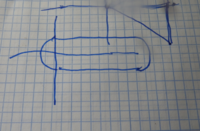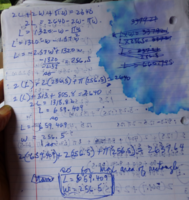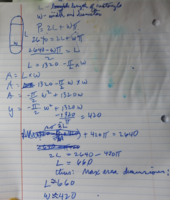allegansveritatem
Full Member
- Joined
- Jan 10, 2018
- Messages
- 962
Here is the problem:

I really couldn't come at this in any way. There seems to be not enough information. What I finally did was try to find the radius as a function of ....I'm not even sure of what but I called it X. This is what I tried:

This came to nothing. It was a hard way tautology. So then I tried a graph:

This also didn't seem to give me any purchase on this problem. So...what to do?

I really couldn't come at this in any way. There seems to be not enough information. What I finally did was try to find the radius as a function of ....I'm not even sure of what but I called it X. This is what I tried:

This came to nothing. It was a hard way tautology. So then I tried a graph:

This also didn't seem to give me any purchase on this problem. So...what to do?


